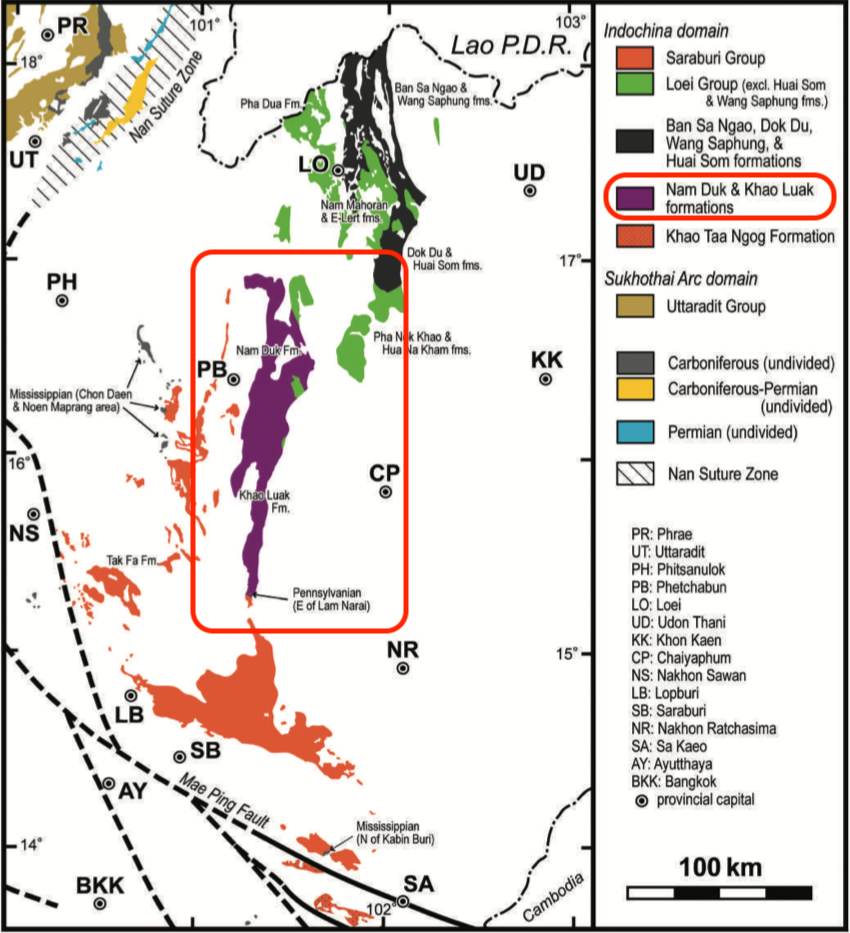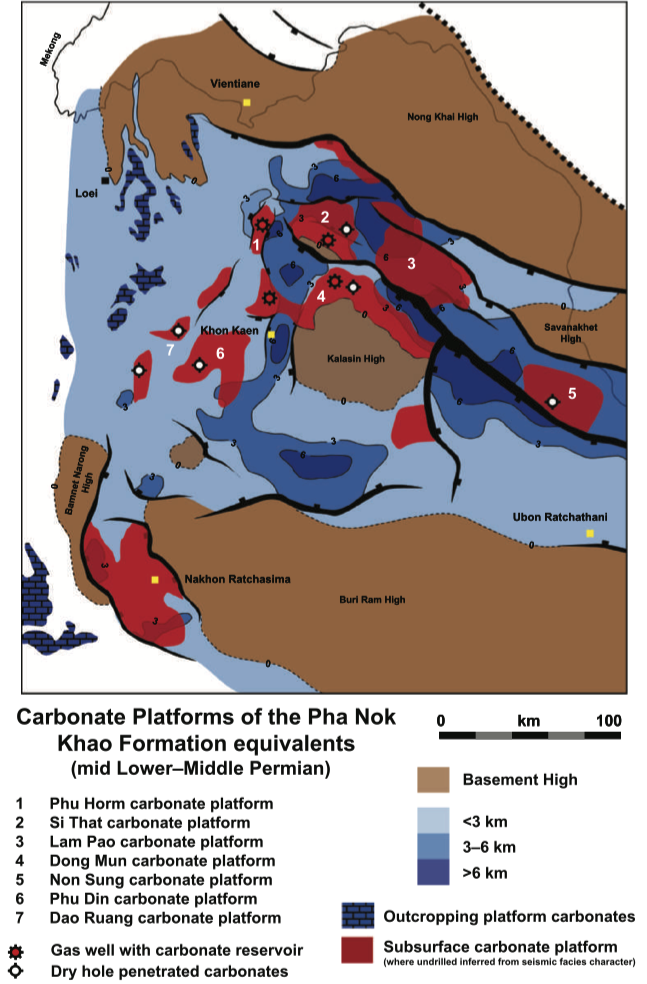Nam Duk Fm
Type Locality and Naming
Nam Duk Fm is the open marine lateral equivalents of the Pha Nok Khao Fm platform carbonates. Named after the reservoir in the Nam Phong gas field. Middle formation of the Saraburi Gr in this region.
Synonym:
[Figure: Distribution of Carboniferous and Permian in NE Thailand. Data mainly based on 1:1 million scale geological map of Thailand (DMR 1999) with minor modifications (Ueno K. & Charoentitirat T., 2011. Page 88).]
Lithology and Thickness
Open marine carbonates.
Relationships and Distribution
Lower contact
Overlies (along with the coeval lower part of the Pha Nok Khao Fm) the mixed siliciclastics and carbonates of the Late Carboniferous Si That Fm.
Upper contact
Coeval and transitional into the Pha Nuk Kaho Fm platform carbonates, which is indicated as the more prevalent facies in the middle Permian.
Regional extent
Khorat Plateau subsurface
GeoJSON
Fossils
Age
Depositional setting
"By the late Early Permian and through the Middle Permian a series of large carbonate platforms (the Pha Nok Khao Fm) became established in all of these basins, located on isolated fault-bounded highs or as ramps attached to basin margins (Fig). Interpretation of seismic lines indicates that the lateral equivalents of these carbonate platforms (the Nam Duk Fm) were deposited in moderately deep water and unobstructed seaways, but well control of this interpretation is lacking. The fact that carbonate deposition dominated the edges of the basins (Fig) suggests that the supply of coarser clastic material to the central parts of these basins was probably severely restricted. On this basis it is thought that the Nam Duk Formation probably consists of carbonate debris aprons around the platforms and carbonate turbidites and micritic mudstones in more distal settings." [Booth, J. & Sattayarak N., 2011, Chapter 9 Subsurface Carboniferous-Cretaceous geology of NE Thailand].
[Figure: Known and interpreted distribution of carbonate platforms of the Pha Nok Khao Formation equivalents within the Isan Basin Complex. Where not proven by drilling, the presence and extent of these carbonate platforms is based on their distinctive seismic reflection facies (Booth, J. & Sattayarak N., 2011, Chapter 9 Subsurface Carboniferous-Cretaceous geology of NE Thailand. Page 196)]
Additional Information

